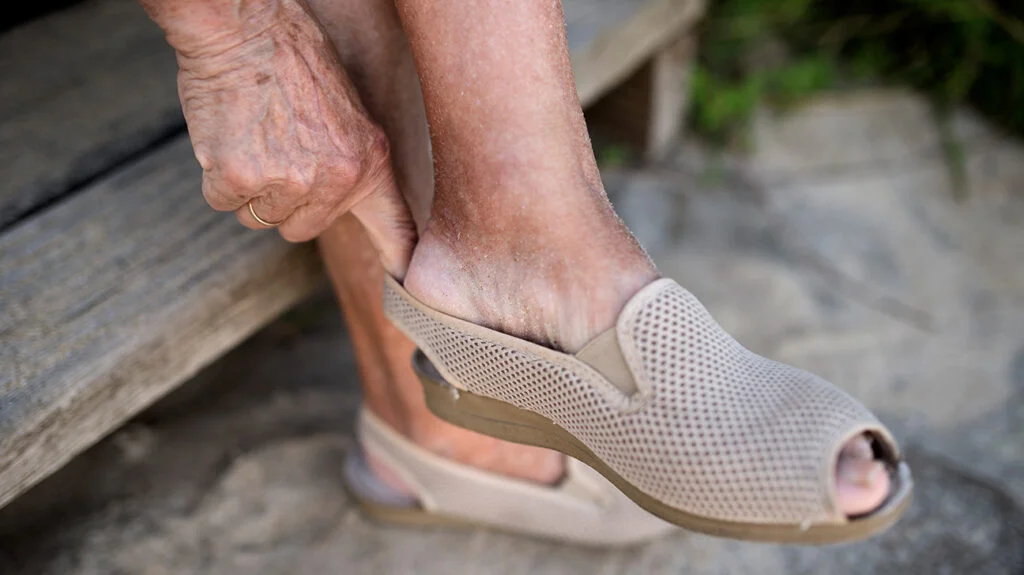Diabetes is a condition that requires careful attention, especially regarding foot health. Men with diabetes face a notably elevated risk of foot complications stemming from nerve damage (neuropathy), diminished blood circulation, and a heightened vulnerability to infections.
- Even seemingly minor foot injuries can develop into serious conditions, potentially resulting in ulcers, infections, or, in extreme cases, amputations.
- Selecting the appropriate footwear is a crucial aspect of managing diabetes effectively.
Wearing shoes that do not fit properly or lack adequate support can exacerbate foot-related issues, creating undue pressure on delicate regions.
- The best shoes for men with diabetes are crafted to provide exceptional support, safeguarding, and comfort, thereby minimising the risk of complications and promoting enhanced mobility.
Grasping the significance of appropriate diabetic footwear in protecting foot health is essential for averting serious foot issues and ensuring a vibrant, pain-free lifestyle.
Why Proper Footwear Is Crucial for Diabetic Men?
Diabetes impacts the feet in various ways, primarily through neuropathy and inadequate circulation. Neuropathy diminishes sensation in the feet, making it challenging for individuals to notice cuts, blisters, or injuries. This diminished awareness can lead to unnoticed wounds that worsen over time. Furthermore, poor circulation hinders healing, elevating the risk of infections and ulcers.
Wearing unsuitable footwear exacerbates these issues. Tight shoes, rigid interiors, or high-pressure areas can create friction and irritation, resulting in painful sores or deformities. Selecting the best shoes for men with diabetes can significantly alleviate pressure points, offer substantial support, and help avert injuries before they escalate into serious problems.
Key Features of Diabetic Shoes That Prevent Foot Complications
- Extra Depth and Wide Toe Box for Pressure Relief
An important characteristic of diabetic shoes is their additional depth and spacious toe box. In contrast to conventional footwear that may constrict and exert undue pressure on the toes, diabetic shoes provide ample space, thereby minimising the likelihood of blisters, calluses, and bunions. This extra space allows for foot swelling, a common issue among men with diabetes, providing a comfortable fit while maintaining proper circulation.
A spacious toe box effectively helps to avoid issues such as hammertoes and corns, which may arise from ongoing pressure and friction. Shoes designed to promote natural toe movement significantly improve comfort and help avert long-term deformities, safeguarding the feet from painful complications.
- Seamless Interior to Prevent Irritation and Injuries
Individuals with diabetes frequently experience sensitive skin that can be susceptible to irritation. Even the tiniest seams or uneven stitching within a shoe can lead to abrasions, potentially resulting in open wounds or ulcers. Diabetic shoes are meticulously crafted with seamless interiors to prevent any possible rubbing or friction against the skin.
Furthermore, the components utilised in diabetic footwear are typically soft and designed to wick away moisture, guaranteeing that the feet stay dry and protected from bacterial growth. This feature minimises the likelihood of infections while ensuring a seamless and comfortable experience.
- Arch Support and Cushioning for Enhanced Comfort
Proper arch support is essential in selecting the best shoes for men living with diabetes. Effective support ensures an even distribution of body weight, alleviating strain on pressure points and helping to prevent foot fatigue. Individuals with diabetes often experience a higher likelihood of foot misalignment, stemming from weakened muscles or alterations in foot structure. Insufficient support can result in discomfort in the heels, arches, and joints, potentially leading to additional complications.
Diabetic shoes frequently feature memory foam insoles, gel padding, or orthotic inserts, providing exceptional cushioning. This effectively absorbs impact during walking, thereby minimising stress on the feet and lowering the risk of developing plantar fasciitis or heel pain.
- Slip-Resistant Soles for Stability and Fall Prevention
Diabetes may impact balance and coordination, thereby elevating the likelihood of falls. Numerous individuals with diabetes encounter diminished sensitivity in their feet, which complicates the ability to sense irregular surfaces or uphold balance. The best shoes for men managing diabetes features slip-resistant outsoles, ensuring superior traction across diverse surfaces.
These shoes provide enhanced traction, particularly beneficial for older men or individuals experiencing peripheral neuropathy. Elements such as reinforced heel counters and shock-absorbing midsoles enhance stability, effectively reducing the risk of sudden slips or falls that may result in injuries.
- Breathable and Moisture-Wicking Materials
Excess moisture accumulation within footwear can foster conditions conducive to the growth of bacteria and fungi, potentially resulting in infections like athlete’s foot or fungal toenails. Diabetic shoes are crafted from breathable materials like mesh, leather, or moisture-wicking fabrics, designed to regulate temperature and maintain dryness for the feet.
By minimising excessive sweating or dryness, these materials help to alleviate skin irritation and lower the risk of infections, ultimately fostering healthier feet over time.
How to Choose the Right Diabetic Shoes for Men
Choosing the most suitable footwear for men with diabetes requires careful attention to specific foot conditions and individual comfort preferences. When acquiring diabetic shoes, it is essential to:
- Ensure the right fit – Shoes ought to strike a perfect balance, avoiding both excessive tightness and looseness. Testing them in the evening, when your feet may be a bit swollen, can assist in finding the most comfortable fit.
- Look for cushioning and arch support – Premium insoles and midsoles effectively absorb shock and ensure even pressure distribution.
- Check for seamless interiors – Steer clear of shoes featuring rough seams, as they may lead to friction and discomfort.
- Choose breathable materials – Leather, mesh, or synthetic moisture-wicking materials effectively maintain dryness and comfort for your feet.
- Opt for slip-resistant soles – Improved traction provides greater stability and minimises the risk of falls.
When to Replace Diabetic Shoes?
Even the best shoes for men with diabetes will eventually show signs of wear. Shoes that diminish in cushioning, support, or traction can elevate the risk of foot complications. It is advisable to replace diabetic shoes when:
- The insoles have become misshapen and fail to offer sufficient support.
- The outsoles exhibit considerable wear and diminished traction.
- The shoes become excessively tight, loose, or uncomfortable after prolonged wear.
- Evidence of deterioration is apparent, including fissures and eroded surfaces.
Consistent examination of footwear is essential for diabetic men to maintain superior foot protection and support, thereby reducing potential risks.
Investing in the Right Footwear for Long-Term Health
For men managing diabetes, it is crucial to prioritize foot health to avert serious complications. Choosing the appropriate diabetic shoes can significantly enhance your well-being, providing essential protection, stability, and comfort, while minimizing the risk of foot ulcers, infections, and deformities.
The best shoes for men with diabetes include characteristics like additional depth, seamless interiors, exceptional cushioning, and slip-resistant soles, providing a secure and comfortable walking experience. Choosing the right footwear tailored to their unique requirements allows men with diabetes to improve mobility, alleviate discomfort, and sustain an active lifestyle while prioritizing safety.
Discover a selection of expertly crafted Thefitville, ensuring your foot health is prioritized with the finest choices available today.
Read more from healthtech



































